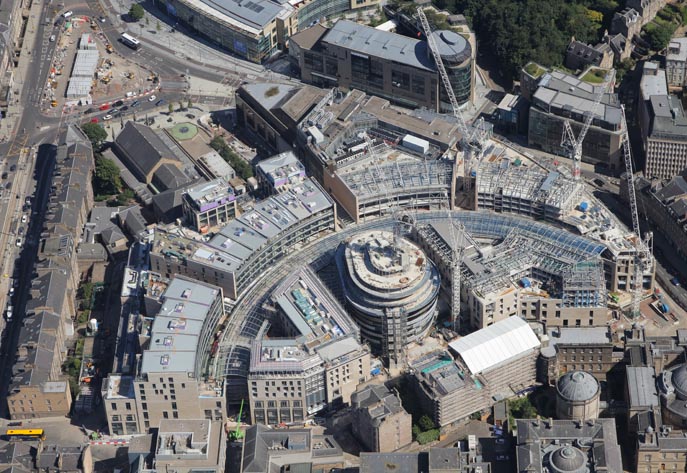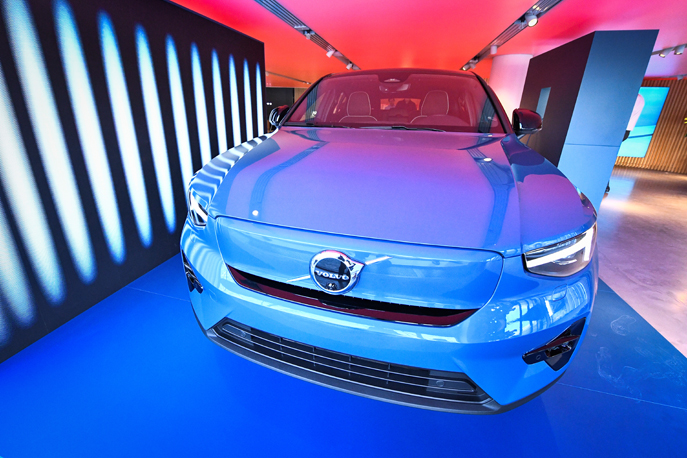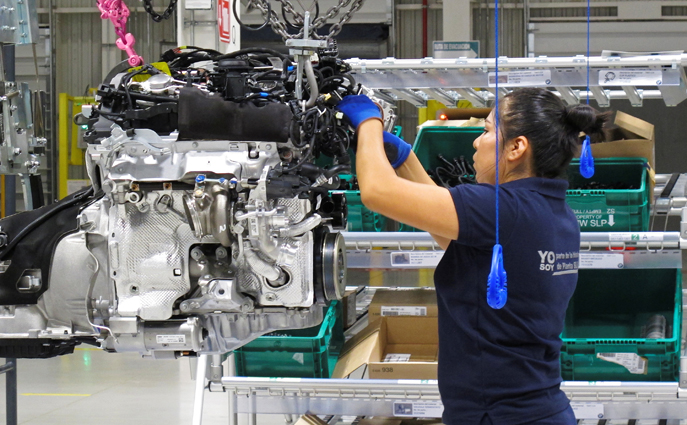Angeli Mehta reports on how Climate Group's SteelZero initiative is boosting demand for low-carbon alternatives from Sweden's SSAB and MIT spinout Boston Metals
The world’s most-used metal has a big carbon problem. Its manufacture was responsible for more than 10% of global emissions in 2019, emitting nearly twice its weight in CO2: 1.9 tonnes for each tonne of steel produced. While companies have been making strides in production efficiencies, improving strength and expanding its range of applications, the fundamentals of steelmaking – reducing iron ore to iron in a blast furnace – haven’t changed in over 100 years.
Making that transition from the blast furnace is critical if net-zero goals are to be met. An analysis by Industry Tracker, a newly launched investor research group, suggests the European steel industry has just a quarter of its carbon budget remaining (based on the International Energy Agency’s net zero scenario). It estimates they have between now and 2033 to start investing in new technologies.
“A few years ago, no one mentioned embodied carbon,” says Gary Culbert, commercial and business development manager at UK structural steelwork specialists BHC. “In a lot of tenders now there is an upfront request for a discussion about the embedded carbon and the recycled content: ‘can we do something different? Give us your ideas about how we can reduce the carbon’ ‒ those discussions are at the forefront now.”
BHC is a member of the Climate Group’s SteelZero initiative, a group of 10 companies, including renewable energy provider Ørsted and property business Landsec, that are using their collective purchasing power to demonstrate that there is a demand for lower carbon steel.

The firms have signed up to procure or specify 100% net-zero steel by 2050, with an interim commitment to get 50% of the way there by 2030.
In the meantime, says Culbert: “We can look at ways to reduce the amount of embedded carbon, look at ways that reduce the amount of steel required in the first place [and] be smart with our designs.”
Steel is the most recycled and recyclable material, enabling savings in raw materials and avoiding carbon emissions. But used steel doesn’t always go to high-grade applications. This requires better sorting and classification of scrap, says Martin Pei, chief technology officer at Swedish steelmaker SSAB. The presence of copper is particularly detrimental to performance, so more new metal must be added to counteract its impact.
ArcelorMittal, says advances it has made mean that emissions can be cut by over 80%
One of the world’s largest steelmakers, ArcelorMittal, says advances it has made mean that emissions can be cut by over 80%, by melting 100% steel scrap in an electric arc furnace powered by renewable energy.
Steel can also be reused. BHC has developed a tracking system that identifies (for example) which steel mill material comes from; the lifecycle assessment of the product; and its recycled content. Every piece of steel that leaves its plant carries a unique identifier that stays with the bar all its life so, in future, decisions can be made about how to re-use or recycle each piece of steel.
Indeed, there’s a growing market in recycling buildings, but testing has to be done to establish, for example, the grade of a piece of steel. Today, says Culbert, “it would be nearly impossible to produce a whole office block using totally scrap material that wasn't melted down and reused.” In future, however, that will change thanks to digital Building Information Models that bring together information about every component of a building – in essence a “building on a chip”.

SteelZero member BHC was the fabricator for 17,000 tonnes of steel that went into Edinburgh’s new St James Quarter. (Credit: St James Quarter)
But such is the demand for steel it’s anticipated that reusing and recycling will only go so far in cutting its carbon footprint.
Can new steel be made without emissions? In Europe the big push is to use green hydrogen, made with renewable energy, to replace the coking coal traditionally used to reduce iron ore to iron.
The resulting solid “sponge iron” is then melted in an electric arc furnace (also powered by renewables) where scrap can also be added. Several companies are now pursuing this route.
This year, the Hybrit initiative developed by SSAB, alongside Europe’s largest iron ore producer LKAB, and Swedish energy company Vattenfall, produced its first sponge iron. The method, it says, eliminates 90% of the emissions associated with steel production. Volvo cars is the first to put SSAB’s steel to the test in vehicle prototypes, with an eye to using it as part of its own journey to reduce supply chain emissions. Mercedes Benz has also signed up and says it aims to be carbon neutral along its supply chain by 2039.
Boston Metal aims to produce steel by using electricity directly. Its process, molten oxide electrolysis, emits only oxygen
SSAB expects to optimise every element of the process further, as the consortium develops a demonstration plant that should be operating in 2025. The first “fossil-free” steel will go to commercial customers in 2026. Ruukki Construction, SSAB’s daughter company, will be amongst the first in the sector to use it, with interest from the construction industry already “quite high”, according to Pei.
In the meantime, SSAB is also constructing a pilot facility to store hydrogen at high pressure. “We are very excited to see that work in practice. It can provide a very important component to help balance the future electricity grid, especially when we know that wind power and (in some places) solar power will be increasing in the grid,” says Pei.
That’s very important, he adds, “because then we can really develop a win-win situation for energy companies investing in wind and solar, and, from the consumer side, lower the cost of hydrogen.”

SSAB and LKAB will progressively convert all their plants so their entire production is fossil-free by 2045.
The transformation will eventually require 55 terrawatt hours (TWh) of renewable energy each year. That’s about as much as is used by the whole of Swedish industry at present, but Pei is optimistic these needs will be met in the coming decades.
In the U.S., Boston Metal, a spin out from Massachusetts Institute of Technology (MIT), aims to cut out the “middleman” of hydrogen and produce steel by using electricity directly. Its process, molten oxide electrolysis, emits only oxygen. Instead of the reduction of iron ore in a blast furnace, an electric current is passed between two electrodes in a reactor. At the top, oxygen bubbles off (and can be collected), while molten iron pools at the bottom of the reactor cell. The production of aluminium also uses electricity to separate oxygen from the metal, but in the process consumes large quantities of carbon.
If we could make iron and oxygen but have to rely on iridium or platinum, then that's the end of the conversation with investors
The big breakthrough came with the discovery at MIT of an ideal material that could serve as the anode (the electrode where oxygen is produced): it can conduct electricity, is stable in the presence of oxygen, and isn’t consumed in the process of producing molten iron (at temperatures of 1,600 degrees Celsius).
Donald Sadoway, professor of materials chemistry at MIT and Boston Metal co-founder, describes this as “a very, very difficult thing to pull off”. It meant that with investment, the process could be scaled.
“If we could make iron and oxygen but have to rely on [unaffordable] iridium or platinum, then that's the end of the conversation” with investors. Moreover, the process doesn’t require iron ore to be turned into pellets; there’s no infrastructure needed for making and storing hydrogen; and the result is molten metal, which eliminates the further need for an electric arc furnace.

“And the quality of the metal is every bit as good as what you would get from the best of the best practice today in steelmaking,” Sadoway asserts.
Earlier this year, Boston Metal raised over $56m from groups including mining companies BHP and Vale, and the venture capital arm of carmaker BMW. The company says the latest round of investments will allow it to validate its technology at industrial scale and it expects to be making steel in commercial quantities by 2025.
Both Boston Metal and BMW are part of another industry grouping, Responsible Steel, which has published a sustainability standard for production sites in the steel industry, and is backing the SteelZero initiative.
People will choose our metal over conventional metal because it's sustainably produced. Maybe at some point, it'll even be cheaper
So how much will carbon-free steel cost?
“I keep reading about a green premium – that you can expect that the new metal is going to be more costly than today's metal,” says MIT’s Sadoway. “We reject that notion. We want it to be at parity with today's metal. So, therefore, people will choose our metal over conventional metal because it's sustainably produced. Maybe at some point, it'll even be cheaper ‒ I can't predict.”
When SSAB made the decision to go ahead with its pilot plant in 2018, the price of carbon in Europe’s emissions trading system was just below €10 per tonne, compared with €60 today. “We see that with the current development pace, it is not far from a break-even point,” suggests Pei. “Hopefully this will really advance in that direction, so the new technology can be competitive.”

Earlier this year, the G7 promised action to decarbonise sectors such as iron and steel using its collective prowess in science and policymaking. The EU has launched proposals for a carbon border adjustment mechanism (CBAM) that is intended to encourage other countries to decarbonise industries, including steel and cement.
To try to avoid disputes at the World Trade Organization, European manufacturers will gradually lose their entitlement to free allowances in the EU’s emissions trading system. “That will be one of the key parameters that will influence the comparison between the blast-furnace based route and the Hybrit route,” says Pei.
The U.S. is about to embark on a massive programme of infrastructure rebuilding. Sadoway envisages the Federal government could use its considerable purchasing power by setting a procurement standard for steel that would set emissions at a level lower than can be achieved by the blast furnace. “They wouldn’t be telling you to go wreck your blast furnace, just that you can’t emit. If you're going to use the blast furnace, you are going to have to have some way of abating the emissions. You could use carbon sequestration or, if you are Boston Metal, you have the red carpet to take you directly to the market. That will stimulate the legacy steelmakers to start making changes.”
The earlier the world’s steelmakers can step onto that red carpet, so much the better.
Angeli Mehta is a former BBC current affairs producer, with a research PhD. She now writes about science, and has a particular interest in the environment and sustainability. @AngeliMehta.


